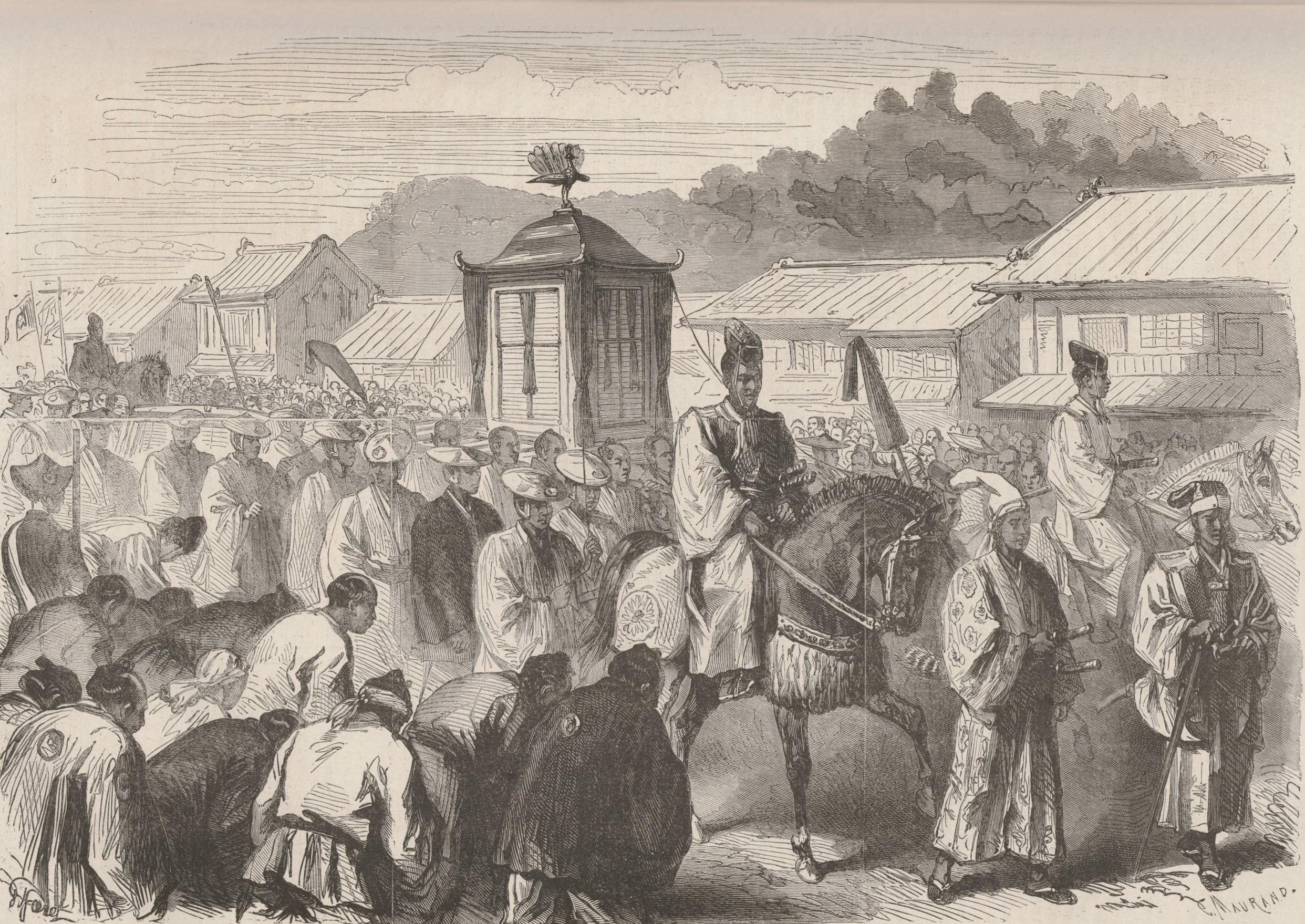|
Aikokusha
The was a political party in the early Meiji-period Japan from 1875 to 1880. The Aikokusha was formed in February 1875 by Itagaki Taisuke, as part a liberal political federation to associate his '' Risshisha'' with the Freedom and People's Rights Movement. It was disbanded the same year, when Ōkubo Toshimichi promised Itagaki that the government would draft a constitution. When no constitution had appeared by September 1878, Itagaki revived the ''Aikokusha'' and renamed it the League for the Establishment of a National Assembly. Its primary purpose was to petition the government to establish a national assembly. It was renamed Liberal Party, which Itagaki founded in October 1881. The ''Aikokusha'' should not be confused with the ''Aikoku Kōtō'', or with various later ultranationalist movements with similar names. See also *List of liberal parties *Liberal democracy *Liberalism in Japan Japanese liberalism formed in the nineteenth century as a reaction against traditi ... [...More Info...] [...Related Items...] OR: [Wikipedia] [Google] [Baidu] |
League For The Establishment Of A National Assembly
The , later called the Great Japan Public Association of Volunteers for the Establishment of a National Assembly (大日本国会期成有志公会), was a Japanese political organization that played a central role during the Meiji period in the movement to establish a National Diet; it was also the forerunner of the Liberal Party. Background In 1875 Taisuke Itagaki formed the Aikokusha, in order to expand his Freedom and People's Rights Movement nationwide. However, because Itagaki was reinstated as a sangi in the Meiji government his Aikokusha soon dissolved on its own. Three years later, in September 1878 the Aikokusha was revived and a conference was held. At its third conference held in November 1879 it was decided to engage in canvassing throughout Japan and collect signatures for a petition to establish a national assembly. Formation of the League The fourth conference of the Aikokusha was held at Osaka's Kitafuku Pavilion on 15 March 1880. 114 people from 24 prefec ... [...More Info...] [...Related Items...] OR: [Wikipedia] [Google] [Baidu] |
Itagaki Taisuke
Count was a Japanese politician. He was a leader of the "Freedom and People's Rights Movement" and founded Japan's first political party, the Liberal Party (Japan, 1881), Liberal Party. Biography Early life Itagaki Taisuke was born into a middle-ranking ''samurai'' family in Tosa Domain, (present day Kōchi Prefecture), After studies in Kōchi, Kōchi, Kōchi and in Edo, he was appointed as ''sobayonin'' (councillor) to Tosa ''daimyō'' Yamauchi Toyoshige, and was in charge of accounts and military matters at the domain's Edo residence in 1861. He disagreed with the domain's official policy of ''kōbu gattai'' (reconciliation between the Imperial Court and the Tokugawa shogunate), and in 1867–1868, he met with Saigō Takamori of the Satsuma Domain, and agreed to pledge Tosa's forces in the effort to overthrow the ''shōgun'' in the upcoming Meiji Restoration. During the Boshin War, he emerged as the principal political figure from Tosa domain as a leader of the Jinshotai ... [...More Info...] [...Related Items...] OR: [Wikipedia] [Google] [Baidu] |
Uyoku Dantai
refers to Japanese ultranationalist far-right activists, provocateurs, and internet trolls (as '' netto-uyoku'') often organized in groups. In 1996 and 2013, the National Police Agency estimated that there were over 1,000 right-wing groups in Japan with about 100,000 members in total. Philosophies and activities are well known for their highly visible propaganda vehicles, known as . The vehicles are usually black, khaki or olive drab, and are decorated with the Imperial Seal, the flag of Japan and the Japanese military flag. They are primarily used to stage protests outside organizations such as the Chinese, Korean or Russian embassies, Chongryon facilities and media organizations, where propaganda (both taped and live) is broadcast through their loudspeakers. They can sometimes be seen driving around cities or parked in busy shopping areas, broadcasting propaganda, military music or , the national anthem. The Greater Japan Patriotic Party, supportive of the US&ndash ... [...More Info...] [...Related Items...] OR: [Wikipedia] [Google] [Baidu] |
Aikoku Kōtō
The was a political party in Meiji-period Japan. The ''Aikoku Kōtō'' was formed in January 1874 by Itagaki Taisuke, Etō Shinpei, Gotō Shōjirō and others as part of the Freedom and People's Rights Movement. Its purpose was to petition the Meiji government to establish a national assembly. Fearing arrest after the failed Saga Rebellion, Itagaki disbanded it soon after its foundation. However, Itagaki revived the party in the 1890s, and it later merged with the Jiyutō. The Aikoku Kōtō can be regarded as the first political party in Japan. It should not be confused with the Aikokusha movement or with later ultranationalist movements with similar names. See also *Liberalism in Japan *List of liberal parties *Liberal democracy Liberal democracy is the combination of a liberal political ideology that operates under an indirect democratic form of government. It is characterized by elections between multiple distinct political parties, a separation of powers into ... [...More Info...] [...Related Items...] OR: [Wikipedia] [Google] [Baidu] |
Government Of Meiji Japan
The was the government that was formed by politicians of the Satsuma Domain and Chōshū Domain in the 1860s. The Meiji government was the early government of the Empire of Japan. Politicians of the Meiji government were known as the Meiji oligarchy, who overthrew the Tokugawa shogunate. Early developments After the Meiji Restoration, the leaders of the ''samurai'' who overthrew the Tokugawa shogunate had no clear agenda or pre-developed plan on how to run Japan. They did have a number of things in common; according to Andrew Gordon, “It was precisely their intermediate status and their insecure salaried position, coupled with their sense of frustrated ambition and entitlement to rule, that account for the revolutionary energy of the Meiji insurgents and their far-reaching program of reform”. most were in their mid-40s, and most were from the four '' tozama'' domains of western Japan (Chōshū, Satsuma, Tosa and Hizen). Although from lower-ranked ''samurai'' families, t ... [...More Info...] [...Related Items...] OR: [Wikipedia] [Google] [Baidu] |
Meiji Period
The is an era of Japanese history that extended from October 23, 1868 to July 30, 1912. The Meiji era was the first half of the Empire of Japan, when the Japanese people moved from being an isolated feudal society at risk of colonization by Western powers to the new paradigm of a modern, industrialized nation state and emergent great power, influenced by Western scientific, technological, philosophical, political, legal, and aesthetic ideas. As a result of such wholesale adoption of radically different ideas, the changes to Japan were profound, and affected its social structure, internal politics, economy, military, and foreign relations. The period corresponded to the reign of Emperor Meiji. It was preceded by the Keiō era and was succeeded by the Taishō era, upon the accession of Emperor Taishō. The rapid modernization during the Meiji era was not without its opponents, as the rapid changes to society caused many disaffected traditionalists from the former samu ... [...More Info...] [...Related Items...] OR: [Wikipedia] [Google] [Baidu] |
Japan
Japan ( ja, 日本, or , and formally , ''Nihonkoku'') is an island country in East Asia. It is situated in the northwest Pacific Ocean, and is bordered on the west by the Sea of Japan, while extending from the Sea of Okhotsk in the north toward the East China Sea, Philippine Sea, and Taiwan in the south. Japan is a part of the Ring of Fire, and spans an archipelago of 6852 islands covering ; the five main islands are Hokkaido, Honshu (the "mainland"), Shikoku, Kyushu, and Okinawa. Tokyo is the nation's capital and largest city, followed by Yokohama, Osaka, Nagoya, Sapporo, Fukuoka, Kobe, and Kyoto. Japan is the eleventh most populous country in the world, as well as one of the most densely populated and urbanized. About three-fourths of the country's terrain is mountainous, concentrating its population of 123.2 million on narrow coastal plains. Japan is divided into 47 administrative prefectures and eight traditional regions. The Greater Tokyo Ar ... [...More Info...] [...Related Items...] OR: [Wikipedia] [Google] [Baidu] |
List Of Liberal Parties
This article gives information on liberalism worldwide. It is an overview of parties that adhere to some form of liberalism and is therefore a list of liberal parties around the world. Introduction The definition of liberal party is highly debatable. In the list below, it is defined as a political party that adheres to the basic principles of political liberalism. This is a broad political current, including left-wing, centrist and right-wing elements. All liberal parties emphasise individual rights, but they differ in their opinion on an active role for the state. This list includes parties of different character, ranging from classical liberalism to social liberalism, conservative liberalism to national liberalism. Several conservative and/or Christian-democratic parties, such as the British Conservative Party, Germany's Christian Democratic Union and Spain's People's Party, are also considered to be neoliberal leaning or have strong liberal conservative and/or c ... [...More Info...] [...Related Items...] OR: [Wikipedia] [Google] [Baidu] |
Meiji Restoration
The , referred to at the time as the , and also known as the Meiji Renovation, Revolution, Regeneration, Reform, or Renewal, was a political event that restored practical imperial rule to Japan in 1868 under Emperor Meiji. Although there were ruling emperors before the Meiji Restoration, the events restored practical abilities and consolidated the political system under the Emperor of Japan. The goals of the restored government were expressed by the new emperor in the Charter Oath. The Restoration led to enormous changes in Japan's political and social structure and spanned both the late Edo period (often called the Bakumatsu) and the beginning of the Meiji era, during which time Japan rapidly industrialized and adopted Western ideas and production methods. Foreign influence The Japanese knew they were behind the Western powers when US Commodore Matthew C. Perry came to Japan in 1853 in large warships with armaments and technology that far outclassed those of Japan, wit ... [...More Info...] [...Related Items...] OR: [Wikipedia] [Google] [Baidu] |
Defunct Political Parties In Japan
Defunct (no longer in use or active) may refer to: * ''Defunct'' (video game), 2014 * Zombie process or defunct process, in Unix-like operating systems See also * * :Former entities * End-of-life product An end-of-life product (EOL product) is a product at the end of the product lifecycle which prevents users from receiving updates, indicating that the product is at the end of its useful life (from the vendor's point of view). At this stage, a ... * Obsolescence {{Disambiguation ... [...More Info...] [...Related Items...] OR: [Wikipedia] [Google] [Baidu] |
Defunct Liberal Political Parties
Defunct (no longer in use or active) may refer to: * ''Defunct'' (video game), 2014 * Zombie process or defunct process, in Unix-like operating systems See also * * :Former entities * End-of-life product * Obsolescence {{Disambiguation ... [...More Info...] [...Related Items...] OR: [Wikipedia] [Google] [Baidu] |
1875 Establishments In Japan
Events January–March * January 1 – The Midland Railway of England abolishes the Second Class passenger category, leaving First Class and Third Class. Other British railway companies follow Midland's lead during the rest of the year (Third Class is renamed Second Class in 1956). * January 5 – The Palais Garnier, one of the most famous opera houses in the world, is inaugurated in Paris. * January 12 – Guangxu becomes the 11th Qing Dynasty Emperor of China at the age of 3, in succession to his cousin. * January 14 – The newly proclaimed King Alfonso XII of Spain (Queen Isabella II's son) arrives in Spain to restore the monarchy during the Third Carlist War. * February 3 – Third Carlist War – Battle of Lácar: Carlist commander Torcuato Mendíri secures a brilliant victory, when he surprises and routs a Government force under General Enrique Bargés at Lácar, east of Estella, nearly capturing newly crowned King Alfonso XII. The Carlis ... [...More Info...] [...Related Items...] OR: [Wikipedia] [Google] [Baidu] |



